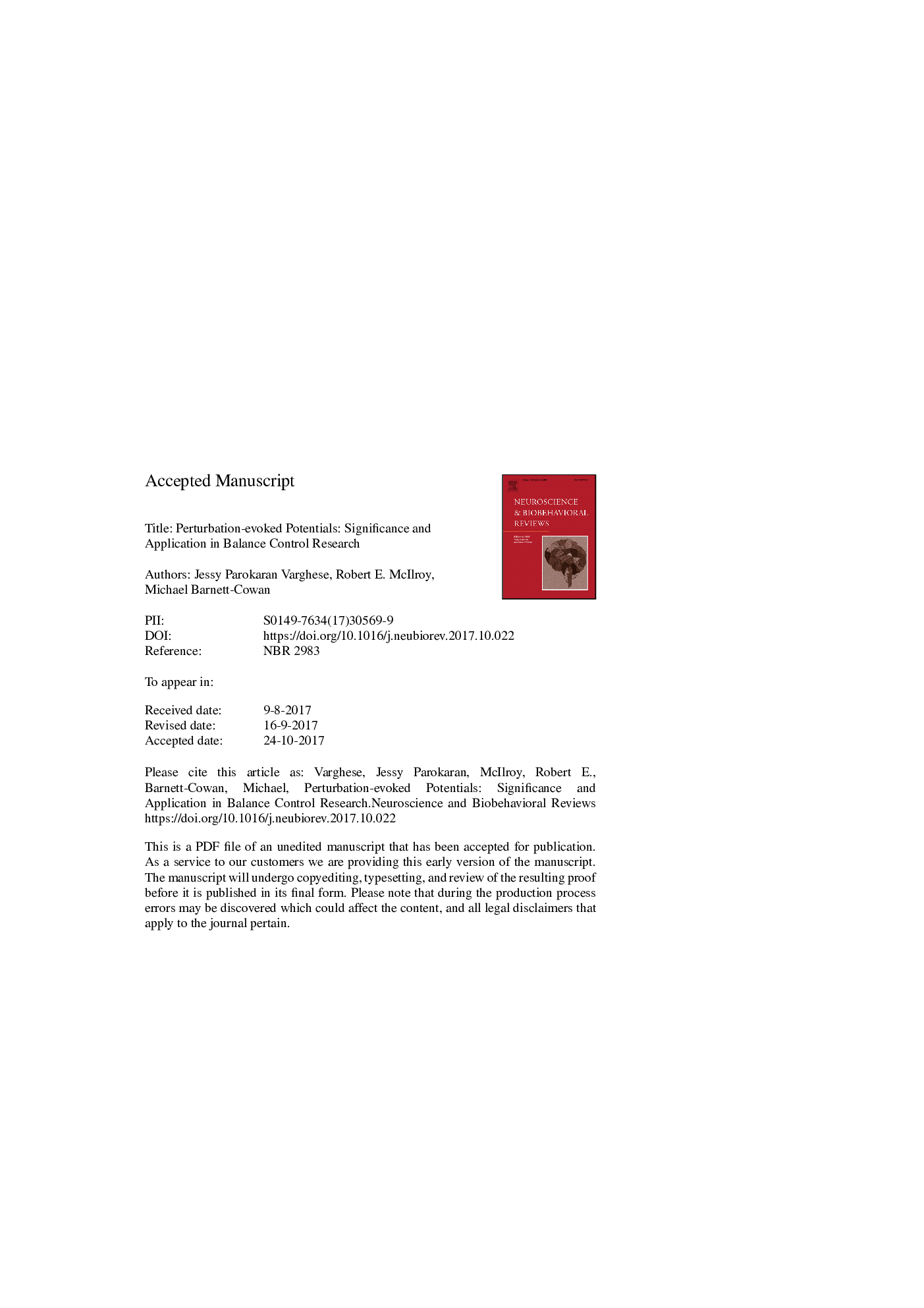| Article ID | Journal | Published Year | Pages | File Type |
|---|---|---|---|---|
| 7302286 | Neuroscience & Biobehavioral Reviews | 2017 | 58 Pages |
Abstract
Historically, balance control was thought to be mediated solely by subcortical structures based on animal research. However, recent findings provide compelling evidence of cortical involvement during balance reactions evoked by whole-body postural perturbations. In humans, an external perturbation elicits an evoked potential, termed the perturbation-evoked potential (PEP). PEPs are widely distributed over fronto-centro-parietal areas with maximal amplitude at the FCz/Cz electrode. From our literature review it is evident that the PEPs are comprised of a small positive potential (P1) that peaks around 30-90Â ms after perturbation onset, a large negative potential (N1) that peaks around 90-160Â ms, followed by positive (P2) and negative (N2) potentials between 200 and 400Â ms. Converging results across multiple studies suggest that these different PEP components are influenced by perturbation characteristics, postural set, environmental, and psychological factors. This review summarizes and integrates seminal research on the PEP, with a special emphasis on the PEP N1. Implications for future studies in PEP research are discussed to encourage further empirical investigation of PEP characteristics in healthy and patient populations.
Keywords
Related Topics
Life Sciences
Neuroscience
Behavioral Neuroscience
Authors
Jessy Parokaran Varghese, Robert E. McIlroy, Michael Barnett-Cowan,
